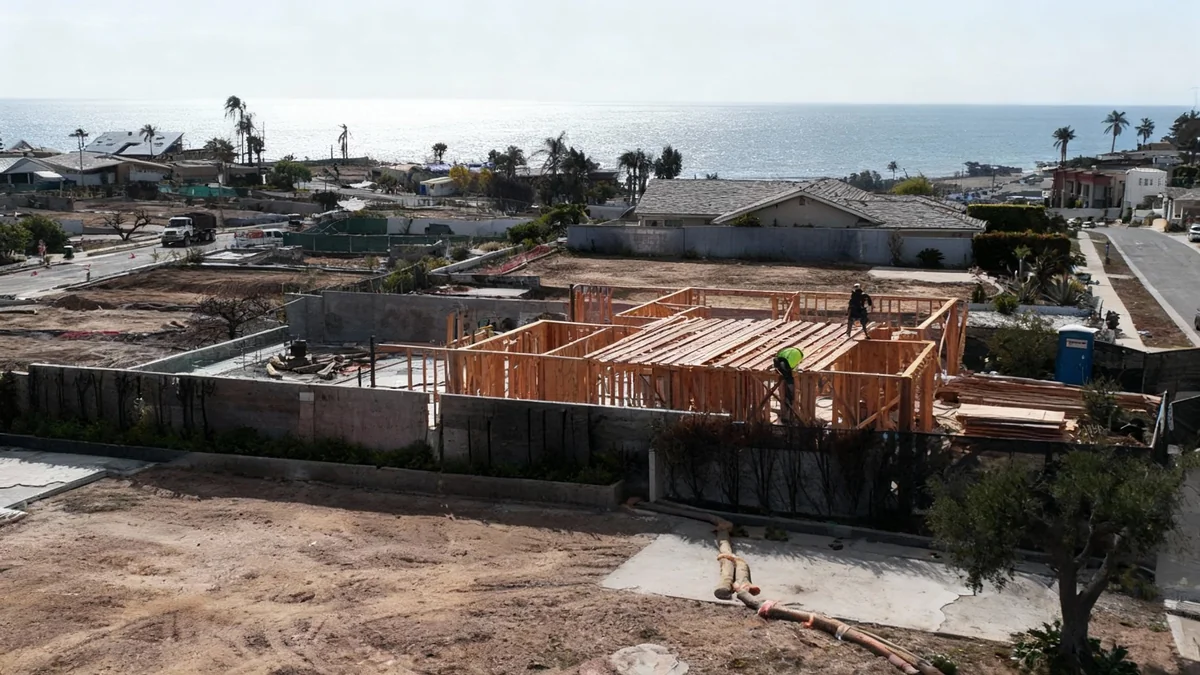D.R. Horton, the largest homebuilder in the United States, has started using an artificial intelligence platform to accelerate the process of finding and developing land for new homes. The move aims to address the nation's severe housing shortage by streamlining one of the most complex stages of construction.
The company is partnering with Prophetic, a Portland-based technology startup, to deploy an AI tool that analyzes complex zoning regulations and land-use rules. This technology is designed to significantly reduce the time it takes to determine if a parcel of land is suitable for residential development, a critical step in bringing new housing to market.
Key Takeaways
- D.R. Horton is using an AI platform from Prophetic to analyze land for new housing projects.
- The technology aims to cut down land analysis time from several hours to as little as 30 seconds.
- This initiative is a response to a national housing deficit estimated at roughly 4 million homes.
- The AI works by processing tens of thousands of local zoning documents to identify development potential.
Tackling a National Housing Deficit
The United States is currently facing a significant housing supply problem. Following years of underbuilding after the Great Recession, the country has a deficit of approximately 4 million homes. This imbalance between supply and demand has contributed to a surge in housing prices, which have increased by over 50% since before the pandemic.
Homebuilders have been trying to increase construction, but they face major obstacles. High costs for materials and labor, along with a difficult and expensive process for acquiring and getting approval for buildable lots, have slowed down the pace of new development.
The Land Acquisition Bottleneck
Before a single foundation can be poured, developers must navigate a maze of local regulations. Every city and county has its own set of rules governing minimum lot sizes, housing density, and where buildings can be placed. This process, known as entitlement, is a major bottleneck in the construction pipeline.
Officials at D.R. Horton believe that technology can help overcome these hurdles. By automating the initial analysis, the company hopes to identify viable land parcels more quickly and efficiently.
"One of the largest challenges to providing affordable housing is the identification, acquisition and entitlement of land suitable for development. We are confident the insights provided by Prophetic are going to help us expand homeownership opportunities for hard-working American individuals and families," said Jason Jones, VP of Data Analytics at D.R. Horton.
How the AI Platform Works
The AI system developed by Prophetic is built to handle the immense complexity of local land-use laws. It functions by ingesting and interpreting thousands of zoning manuals from municipalities across the country.
Oliver Alexander, the founder and CEO of Prophetic, described the traditional method as an "incredibly large, tedious, detail-oriented process." His company's platform automates this task. For any piece of land, the software analyzes all relevant zoning codes to determine what can be built, how much of it, and where.
Decoding the Rules
According to Prophetic, there are over 440,000 different ways to describe what is permitted on a piece of land in the states it has analyzed so far. The AI is designed to understand this vast and varied language.
The system is currently active in 25 states, with a plan to cover all 50 states by June. It is updated quarterly to ensure the information remains current with any changes in local laws.
From Hours to Seconds
A key feature of the platform is its speed. What would typically take a land acquisition expert two to three hours of manual research can now be accomplished in about 30 seconds. This allows developers to evaluate far more properties in less time.
Crucially, the AI also builds trust by showing its work. "Then it tells you where that information came from, which is the key differentiator," Alexander explained. "When you have that section title and the page that it came from, that builds trust." This feature allows human experts to quickly verify the AI's findings.
A Competitive Edge in a Tough Market
By drastically speeding up the decision-making process, this technology provides a significant competitive advantage. In the fast-moving world of real estate, being the first to make an informed offer on a piece of land can be the difference between securing a new project and losing out to a competitor.
For large-scale builders like D.R. Horton, the ability to quickly assess the potential of countless parcels of land is a game-changer. It allows them to be more agile and strategic in their acquisitions.
- Faster Decisions: Evaluate land potential in seconds, not hours.
- Broader Search: Analyze more properties across different municipalities.
- Increased Accuracy: Reduce the risk of human error in interpreting complex zoning codes.
- Market Control: Move on promising properties before competitors have finished their analysis.
Alexander believes this speed creates a powerful position in the market. "If you have that much of an edge in your speed to decision, you effectively control your entire market, because before anyone else can decide, you’ve tied it up," he said.
As the housing industry continues to grapple with supply constraints, the adoption of technologies like artificial intelligence may become a critical tool for builders working to close the housing gap and create more affordable options for American families.





